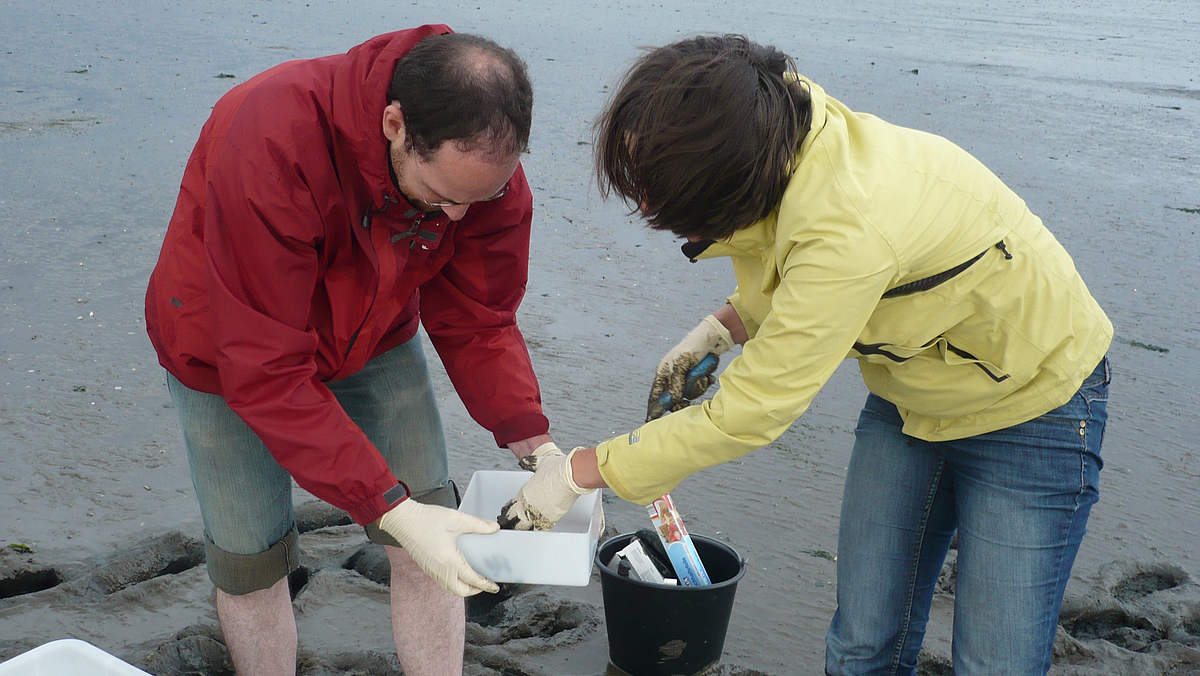At the beginning of a scientific project, we usually take samples. Sometimes this happens under difficult conditions such as storms, heat or heavy seas. In this case, it was the stickiness of the silt.
Research
Tool development
Marine fungal communities are very diverse and often include taxa of Dikarya to basal fungal lineages. At the same time, they are characterized by a high percentage of undescribed taxa. To address ecological questions, it is essential to record the comprehensive diversity of a fungal community and to be able to name individual species. This is the only way to compare data and develop and test ecological hypotheses.
Marine fungi are still strongly underrepresented in existing data sets.
We have developed a tool-kit to help detect and classify marine fungi (communities). This includes:
- improved 18S rRNA gene sequence datasets (in collaboration with the SILVA team).
- 18S rRNA gene sequence primer pairs for different sequencing techniques and suitable for community analyses and group-specific amplification
- 18S rRNA fungal-specific phylogenetic reference tree & alignment. The tool allows taxonomic classification of unknown fungal taxa or identification and classification of clades formed by environmental sequences (environmental clades).
- analysis pipeline for Illumina-generated sequences
- development of a CARD-FISH protocol for detection and visualization of fungi in water samples
Degradation capacities of marine fungi
Terrestrial fungi often possess a wide range of exoenzymes that allow them to decompose labile to complex organic material. Initial pilot studies on marine fungi show similar patterns. However, it is unclear whether there are fungal group-specific substrate preferences, which enzymes are involved, and what the fungal decomposition patterns of different polymers are. These key questions are being addressed by us through an interdisciplinary project.
Fungal interactions
Microorganisms within the same habitat often form complex, network-like interaction patterns. Interactions can be of positive nature, for example where multiple species working together to decompose complex material. However, interactions can also be negative in nature, in that the interaction partners weaken or displace each other, e.g. by simple overgrowth up to the excretion of lethal metabolites. In our project we want to find out if there are global patterns in fungal-fungal interactions and which metabolite groups are involved in positive or negative interaction patterns.

![[Translate to English:]](/fileadmin/user_upload/logo-moleco1500l.jpg)
![[Translate to English:]](/fileadmin/user_upload/logo-molecol-16-9.jpg)
